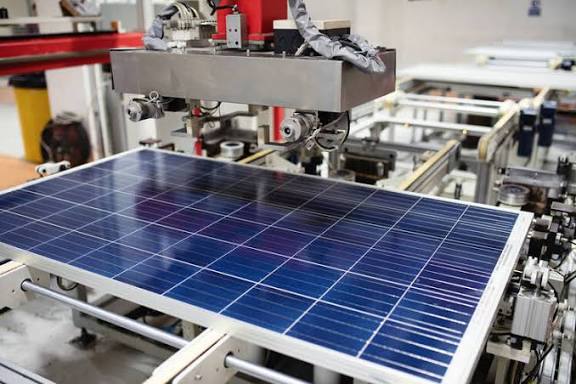Transformer-Based vs. Transformerless Inverters: My Take on the Ongoing Debate.
As someone who has spent years working with solar energy systems — from residential rooftops to large commercial installations — I’ve come across one debate that never seems to die: transformer-based vs. transformerless inverters.
Every time I speak with installers, engineers, or even curious homeowners, this topic comes up. Which is better? Which one lasts longer? Which one is safer? Well, today, I’m sharing my professional take on this ongoing debate — not from theory, but from real-world experience.

Understanding the Role of a Solar Inverter
Before we jump into the comparison, let’s take a quick step back. A solar inverter is the heart of any solar energy system. It converts the DC (direct current) electricity generated by your solar panels into AC (alternating current) — the type of electricity your appliances and the grid can use.
But not all inverters are built the same way. The presence (or absence) of a transformer inside the inverter makes a big difference in how it performs, how efficient it is, and even how safe it feels to work with.

What Is a Transformer-Based Inverter?
A transformer-based inverter includes an internal transformer that isolates the DC side (your solar panels or batteries) from the AC side (your house or the grid). Think of the transformer as a safety wall — it ensures that electricity doesn’t flow where it shouldn’t.
These inverters have been around since the early days of solar installations. They’re known for their robustness and reliability, especially in off-grid solar systems or hybrid setups where the inverter connects to both the grid and batteries.
In short, a transformer-based inverter prioritizes safety and compatibility — especially in environments where electrical isolation is crucial.

What Is a Transformerless Inverter?
A transformerless inverter, on the other hand, removes that internal transformer entirely. Instead, it uses advanced electronic circuitry to perform the DC-to-AC conversion directly.
Why remove the transformer? The main reason is efficiency and weight. Without the heavy magnetic component, the inverter becomes lighter, more compact, and more efficient, often achieving conversion efficiencies above 97% to 99%.
Transformerless inverters have become the go-to choice for grid-tied inverter systems, where safety regulations and modern electronics can handle isolation and fault detection without the need for a physical transformer.

Key Technical Differences
Here’s how the two compare from a technical standpoint:
| Feature | Transformer-Based Inverter | Transformerless Inverter |
|---|---|---|
| Isolation | Physical galvanic isolation between DC and AC | No physical isolation, relies on electronic protection |
| Efficiency | 93–96% (lower due to magnetic losses) | 97–99% (higher, less heat loss) |
| Weight | Heavier, bulkier | Lightweight and compact |
| Safety | Excellent isolation protection | Advanced electronic safety mechanisms required |
| Cost | Generally more expensive | More affordable |
| Maintenance | Easier to service but heavier components | Lower maintenance but complex electronics |
Efficiency: The Hidden Edge of Transformerless Designs
In my experience, the biggest advantage of transformerless inverters is efficiency. Every fraction of a percent counts in a solar installation, especially when you’re working on systems designed to run 24/7.
The transformer in traditional inverters introduces energy losses — mostly heat — which can lower the total output. Removing it means you can convert more of your sunlight into usable energy.
So if you’re installing a grid-tied solar system where efficiency is key, the transformerless inverter often gives you a measurable edge.
Safety: The Classic Strength of Transformer-Based Models
However, when it comes to safety and reliability, transformer-based inverters still hold their ground. The physical isolation between the solar panels and the AC output provides peace of mind — especially in off-grid or hybrid systems where you’re connecting batteries, generators, and various energy sources.
I like to compare it to having a fence around your backyard. The transformer acts as that fence, ensuring that DC faults don’t spill into the AC side, reducing the risk of electric shocks or ground faults.
That’s why many industrial or mission-critical installations — hospitals, telecom base stations, or remote power systems — still rely on transformer-based units. The extra weight and cost are often worth the assurance.
Cost and Maintenance
Cost is another key point in this debate. Transformer-based inverters tend to cost more due to the size and materials of the transformer. They’re also bulkier and heavier, making shipping and installation more demanding.
Transformerless inverters, meanwhile, are cheaper to produce, easier to install, and simpler to mount — which makes them appealing to both installers and customers.
From a maintenance perspective, I’ve noticed that transformerless models have fewer moving parts, but when they do fail, repairs can be more complex and require specialized expertise.
Where Each Type Performs Best
Let’s make this practical. Based on my professional experience:
1. Grid-Tied Systems
If you’re connecting to the grid and aiming for high efficiency with clean power conversion, transformerless inverters are the best choice. They’re lighter, cheaper, and perfect for residential rooftops and commercial buildings.
2. Off-Grid Solar Systems
For standalone solar setups that rely on batteries, transformer-based inverters are often more dependable. Their isolation helps prevent unwanted current leakage and protects sensitive electronics.
3. Hybrid Systems
If your solar system is both grid-connected and battery-backed, I’ve found that either can work — but transformer-based inverters tend to offer better flexibility and resilience when switching between power sources.
Real-World Pros and Cons from My Experience
Here’s how it plays out in the field:
Transformer-Based Inverter
✅ Pros:
- Excellent isolation and safety
- Handles mixed power sources easily
- Proven long-term durability
❌ Cons:
- Lower efficiency
- Heavier and bulkier
- More expensive
Transformerless Inverter
✅ Pros:
- High efficiency and power output
- Lighter and easier to install
- Lower cost
❌ Cons:
- No physical isolation (depends on electronics for safety)
- Not ideal for harsh or remote environments
- Can be more sensitive to grounding issues
My Professional Take
If you ask me which inverter type I personally prefer — my answer depends on the application.
For grid-tied systems where space, efficiency, and cost matter, I go for transformerless inverters without hesitation. The technology has matured, and modern safety features like residual current monitoring make them very reliable.
But for off-grid or hybrid systems, especially in remote areas or unstable grids, I still recommend transformer-based inverters. They’re simply more forgiving and provide the isolation that keeps sensitive equipment protected.
At the end of the day, both technologies have earned their place in the solar industry. It’s not about which one is “better” overall — it’s about matching the right inverter to the right system.
Final Thoughts
The debate between transformer-based and transformerless inverters will likely continue for years. Each has its strengths, and both play vital roles in helping us build more efficient, safe, and reliable solar energy systems.
If you’re planning your next solar installation, don’t just pick based on what’s trendy — think about your system’s design, location, and purpose. The right inverter can make all the difference in long-term performance and peace of mind.
💬 Your Turn
Have you worked with both inverter types? What’s your personal experience with transformer-based and transformerless inverters in real-world installations?
I’d love to hear your thoughts in the comments — your insights could help others make smarter solar choices.






